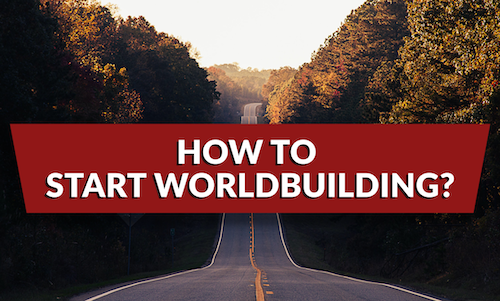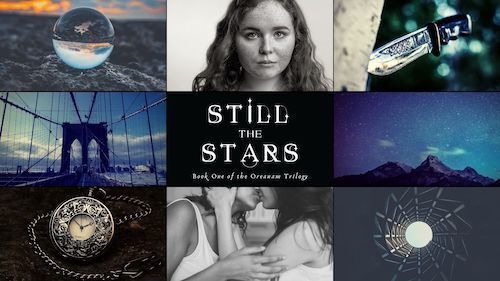Chris Baty's Blog, page 33
October 14, 2021
Having a Clear
Start to NaNoWriMo Season

Now might be a little early for spring cleaning, but just in time to tidy up before NaNoWriMo! NaNo guest L.E. Gibler walks us through her cleaning preparation before she begins her writing marathon.
The beginning of fall brings with it some of my favorite things: changing leaves, crisp evenings, and pumpkins galore. It also heralds the coming of NaNoWriMo, and with it, self-imposed deadlines to be fully prepared for the fun and madness that is the month of November.
Whether it is having a working space ready to write from or having the peace of mind that allows for words to flow, being prepared for NaNoWriMo is about more than just the countdown to November 1st. As a dedicated “plantster” myself, I’m all for some planning and some winging it, but I am also all about being prepared for the start. Those preparations also involve cleaning up lingering projects, cleaning up my office space, and making sure that there are plenty of comfortable alternatives for the cats to sit on that doesn’t involve my laptop.
Personally, I like to set deadlines for myself as much as possible around November - including the dreaded task of finishing up the editing of current works in progress. Once current projects are wrapped up, the planning can begin. This can involve starting to plot out my story, or, if I’m really going to be organized, planning out social media posts beforehand to take some added stress off for November.
Once I’ve prepared a clean space mentally, it’s on to preparing my working space. To say an area is clean does not necessarily mean that it is free of dust or papers (or dog hair). Instead, it means that it is set up in such a way as to allow for the freedom of thoughts to run wild. What is needed to find that perfect balance will be different for everyone. For me, it’s a clear board to pin or write ideas on, space to spread out notes across a flat surface, and a room that can close in around me until the rest of the world fades away.
There’s nothing quite like the magic that can come from a month full of writing, and the best way to make the most of every moment possible is to be prepared, mentally and physically, for all the writing sprints, late nights, and last-second deadlines. If all of these steps of preparation are done, then I know that I’ll be in the best spot possible come the beginning of November. The only thing I should have left to prepare for come November 1st will be to fully stock my supply of caffeine.
Whether you’re a planner, a planster, a panster, or something in between, I want to wish all of my fellow writers the best of luck for this writing season!

Born in Germany, and raised in the Pacific Northwest, L.E. Gibler has been writing for as long as she has been riding horses, nearly 30 years for both. Each venture into the world of written words is a step closer to realizing a long standing dream, and each story shared is a step in the right direction. She loves to connect with fellow writers, especially fellow “would-be writers” :).Check out her blog, website, twitter @blythlea and facebook @LEGibler
Top Photo by Pan Xiaozhen on Unsplash
October 13, 2021
3 Tips for Fast Drafting Your Novel In Record Time

Every year, we’re lucky to have great sponsors for our nonprofit events. Writing Mastery Academy, a 2021 NaNo sponsor, was founded by Jessica Brody, author of the bestselling plotting guide Save the Cat! Writes a Novel. In this post, Jessica shares her tips for getting words down on the page quickly, aka Fast Drafting:
As an author who writes on more than 350,000 words per year, I like to joke that every month is a NaNoWriMo for me. So with the real NaNoWriMo approaching, I thought I’d share my top 3 tips for writing quickly and efficiently, which you can use to easily smash through that 50k mark this November!
1. You Don’t Need an Outline. You Only Need 5 Things.As the author of Save the Cat! Writes a Novel, I’m used to talking about plot. But as any happy “pantser” will tell you, you don’t have to start a novel with a full plot outline (although you certainly can!).
No matter if you’re a die hard plotter, pantser or somewhere in between, I urge you to, at the very least, sit down and brainstorm 5 things about your main character, your plot, and your world before you begin writing.
In my Novel Fast Drafting course, I call this the “Level 1” groundwork. It’s the bare minimum brainstorming that I believe you need to set yourself up for success when fast drafting your NaNo novel.
And here’s the best news: the 5 things can be anything!
For your main character, it can be physical traits, personality traits, unique characteristics, nervous ticks, habits, pet peeves, pieces of backstory, likes, dislikes, flaws, the sky’s the limit!
For your plot, it can be any 5 things that happen in your story at any time. Your opening scene, your final scene, a kissing scene, a fight scene, a discovery scene, a battle scene, a break-up scene. This is a wide-open brainstorm that will get you started thinking about structure and more importantly, give you scenes to write toward.
And for your world (realistic or fantasy!), start your groundwork by brainstorming any 5 high-level details about the setting of your story. Like facts or history of the town, number of oceans or planets, biggest rivals (political, personal, or between schools or towns), rules of magic, etc.
Starting with only 5 things for character, plot, and world will help keep you on track throughout the process and point you in the right direction. Think of it like a rudder on your novel’s boat.
Of course, you can go beyond those 5 things (as many happy plotters will tell you!) and I often find writers who start with these 5 things end up brainstorming much more, but these 5 things are a great starting point.
2. Always Write Forward, Never Backward.This tip might seem obvious. Of course, I would always write forward! Why would I write backward? But you’d be surprised! Every time you go back and edit something that you’ve already written, you are essentially writing backward. You are erasing progress. I know, I know, it’s called revision. But the whole philosophy behind my Fast Drafting method (and arguably a key step to winning NaNoWriMo) is that you only put new words on the page every day. Which means resisting the urge to edit words you’ve already written.
This is not easy. But here’s what I say to myself as I Fast Draft, whenever I feel the urge to edit:
“Present Jessica is a horrible reviser! Because Present Jessica has no idea what the full story is going to look like. Present Jessica is the least capable person to revise this novel. But you know who is the most capable person to revise this novel? Future Jessica! Future Jessica has seen the whole story from start to finish. She has perspective. She knows what needs to be done and how to do it. Present Jessica would just be wasting time if she started revising now.”
And it’s true! Until you’ve finished the story, you can’t revise it with clarity. And the fastest way to finish the story and get that clarity is to always write forward.
3. Revise Invisibly.But! But! But what if I have ideas for revising as I write? I don’t want to forget them! Of course, you don’t. And here’s where the most crucial element of my Fast Drafting method comes into play (and what many students in my Novel Fast Drafting course have called a “game changer”).
I call it “Invisible Revising” and here’s how it works:
Invisible revisions are revisions you only make in your mind. Not on the actual page. I know, it sounds like a Jedi mind trick or something. Maybe I should call them Jedi revisions…
When a revision idea comes to you (whether it be something small like a name change or large like the introduction of a new subplot), instead of going back to make the revision when the idea comes to you, you write it down somewhere so you don’t forget. Or maybe you leave a little comment for yourself in the manuscript, like, “Change name,” or “introduce new subplot here.” Then, you keep going. But here’s the catch. You keep going, as if you’ve already made the change.
It’s an invisible revision.
From that point forward, the character has a new name and that new subplot does exist. It doesn’t make for the tidiest first draft (but that’s not what first drafts are for, are they? Otherwise they’d be called final drafts.) But it makes for a very fast and efficient first draft. Because it saves so much time. Instead of writing backward (going back to add in the new subplot), you revise it invisibly and keep writing forward. Then, by the time you reach the end of the first draft, you know exactly what you need to do to revise it.
With just these three tips: brainstorm 5 things, always write forward, and revise invisibly, you can stop stressing, second-guessing and endlessly revising, and rock NaNoWriMo (and every writing month)!
If you want to dive deeper into invisible revisions or any of these tips, you can learn more in my Novel Fast Drafting course, available to stream on-demand in the Writing Mastery Academy.
Here’s to your Fast Drafting success!

Jessica Brody is the author of the #1 bestselling novel-writing guide, Save the Cat! Writes a Novel and the founder of the online writing school, Writing Mastery Academy. She has also written over 20 novels for teen, tweens, and adults. Her books have been translated and published in over 23 countries and several have been optioned for film and television.
Top photo by Kaitlyn Baker on Unsplash.
October 8, 2021
Preparing Before NaNoWriMo

We only have a few more weeks before NaNoWriMo comes knocking at our doors, asking for our utmost dedication and creativity for the 50,000 word count. NaNo guest Sydney Salter encourages us to prepare and plan accordingly on what we want to do with our novels when we finish.
I’ve pushed myself to the 50,000-word finish line for six NaNoWriMo novels—My Big Nose And Other Natural Disasters and Swoon At Your Own Risk eventually got published. I polished the other manuscripts into market-ready shape, should the market ever be ready for a YA mummy romcom. I had fun writing those unsold stories and learned a lot. No regrets. I told stories that I wanted to tell.
It’s that sixth manuscript. I wrote 50,003 words and never opened the manuscript again. It’s still on my computer file with a 2012 date stamp.
That’s the novel I wrote by the seat of my pants. I dove into the story with a big voice and a vague notion of where it might go. And I struggled. One day I padded my word count with the character’s grocery list. She needed A LOT of stuff at the store! Ugh. The plot, characters, setting—all of it is a big fat mess.
Not that a mess is a bad thing for a NaNo novel. To reach that 50,000 words in 30 days, you can’t go back and fix stuff. That’s one of the best parts of fast writing. You push yourself through some rough patches, making notes about stuff to fix later.
The problem occurs when you make such a mess that the thought of rewriting everything makes you want to do anything else—like scrub your bathroom, or something. The other sad fact is that 50,000 words usually leaves you in the perilous middle of a full-length novel. After November you have to find the excitement to write thousands and thousands of words to get to that magic phrase: The End.
My 2012 NaNo experience was so bad that I waited seven years before trying again. I wrote slowly for years. I missed out on creating that fast draft that exists to be revised into something shiny and good. Writing slowly gets the job done, eventually. But slowly.
We’re not here to write slow. We’re here to get a big chunk of a novel written!
A little preparation can go a long way to making November a fun and productive writing month. Right now I’m thinking about my main character. His sidekick. His enemies. I’m thinking about what he thinks he wants versus what he needs. I’m jotting down ideas for great scenes. I plan to create a loose outline. I know that magic happens during the writing process, so I won’t be rigid about my planned scenes, but if I’m ever feeling lost, I’ll have something to write about. You know, besides groceries.
I’m not going to do it alone, either. I’ll look to all the great info here at NaNoWriMo and I’ll pick a writing craft book to accompany me through this first draft. So many writing exercises have turned into really great scenes in my stories.
Every NaNo is different just like every story is different. But I do know that taking some time to prepare can leave you in a better place when you hit that delicious 50,000 word mark. You want to write something that you are excited to finish and revise. Let’s get ready to write some great stories!

Sydney Salter’s novels include My Big Nose And Other Natural Disasters, Jungle Crossing, and Swoon At Your Own Risk. Sydney lives in Utah with her husband and assorted dogs and cats. Her proudest NaNoWriMo moment: baking six pies AND writing 1,667 words on Thanksgiving Day. You can visit her website and find her on Instagram: @sydney_salter
Top Photo by Kyle Glenn on Unsplash
October 6, 2021
How to Start Worldbuilding?

Every year, we’re lucky to have great sponsors for our nonprofit events. World Anvil, a 2021 NaNoWriMo sponsor, helps you develop and organize your characters, plot, and world setting. Today, World Anvil is here to share some pro tips for worldbuilding basics!
How do I start worldbuilding? It’s one of the most commonly asked questions in our community, and one which even seasoned professionals ask! After all, creating epic settings like those of The Expanse, Game of Thrones, or Mistborn can seem like an overwhelming task—but they all start from the same place: the fragment of an idea, carefully grown into something extraordinary. The good news is that you can easily create your own rich, unique setting, and in this post I’ll tell you how to start!
Getting inspiration!Let’s start at the beginning—that flash of inspiration. Brandon Sanderson describes a drive in foggy weather as his inspiration for Mistborn. Sometimes a setting idea can come from a dream, flash fiction, a TV show or game, a character, or from a magic system you’ve been toying with. The desire to dig into a new genre—sci fi, steampunk or epic fantasy—is also a great place to start. And occasionally, a plot walks into your brain with a setting—or a least a few fragments of one—attached.
Keeping a writing notebook is a great way to hold onto inspiration until you’re ready to take the next step. And reading back over your old thoughts is sometimes enough to inspire you for a brand new setting! But once you have your inspiration—what on earth are you supposed to do with it?
Worldbuilding MetaIdeas are all well and good, but writing is 1% inspiration and 99% perspiration. So how do you develop the taste of an idea into an entire setting for a novel or series? Well, bring on the Worldbuilding Meta!
A Worldbuilding Meta document is the big stuff, the most critical DNA of your setting. It helps you keep track of the overarching themes and components as you build your world, and to make logical choices. If you already have a setting, it helps you prioritize and streamline which elements are most important, and to avoid bloat or over-complexity. Later in the writing process, it inspires new ideas and even helps you pitch your setting to others! And if you’re writing with others, it’s critical to keep you on the same page.
The Worldbuilding Meta is divided into short sections of questions to help you flesh out your world logically. Each section helps you establish critical information, and those answers will inform the next ones. This creates a dynamic and cohesive world setting.
Scope: Deciding why you’re building your setting is often the foundation for all your other choices!
What is your motivation for building this world?What is the hook or unique selling point of your setting? What makes it different?Theme: Genres, mood and tone, as well as the recurring themes and motifs you use to reinforce them, are excellent ways to start defining your setting.
What’s the genre of your world?What is your world’s mood? How does the world feel (character/reader experience)?What are the recurring themes which reinforce the genre, mood and feel of your world?Focus: You can’t build EVERYTHING in your setting, or you’ll never write that novel! Focus helps you pick which areas you want to build in more detail (we suggest about five). You might allude to a few others without expanding on them, and some issues won’t be relevant to your story at all. Here are some examples (there are even more on the meta page in World Anvil!)
Military InfluenceReligious InfluenceTechnology InfluenceArts and Culture InfluenceWealth DistributionAgriculture And TradeRace RelationsClass RelationsGender RelationsDrama sets your world in motion, creating a dynamic setting through current affairs. A couple might directly relate to your plot, but others are there to make your world feel expansive and dynamic, and to reinforce your genre and tone. Examples might include:
A blight which has been decimating crops, creating food shortagesA nearby country is on the brink of civil war Rumors of a breakthrough in transportation technology are circlingA mysterious, new religion has been sweeping through the upper echelons of societyScene gets specific, nailing down the physical properties of your world (especially if different from our own Earth). Magic, flying islands, ice worlds, extra-long winters etc. can all be mentioned here.
What are the fundamental differences in the natural laws of your world compared to Earth?What does the geography of your world look like? Does it have special properties or features?What is the initial scale of your active storytelling space? A city, a continent, or a galaxy, for example?The People section helps you describe the inhabitants in broad strokes, and also sows more seeds of conflict in your world. Discovering their needs gives them a dynamic relationship and you some great threads for your plot and story!
Who used to live here, and what’s their history?Which species/cultures live here now and what’s their history?What do they need, and what do they need from each other?Two really important things to remember about creating your worldbuilding meta are:
Only write single sentences or paragraphs! This is just the overview, and the longer you make it, the harder it will be to parse through later. Every idea can be expanded as much (or as little) as you want in worldbuilding templates later, interconnected and completely searchable. You don’t need to fill it in order (although I do recommend starting with Scope - it’s incredibly useful for helping you make other decisions!)Getting StartedThe full worldbuilding meta document with all the prompts is available (for free, of course!) on World Anvil as part of your world setting. You can also find additional prompts and explanations for each question, to help inspire you and guide you in the right direction!
If you’re looking for a good series bible to help you develop your worldbuilding, and keep your setting safe and organized, World Anvil was tailor made by professional writers exactly for this task, and the integrated novel writing software and its marketing capabilities make it an ideal choice for any writer!
Ready to start worldbuilding? Go make a free account on World Anvil to get started right now!
Otherwise, check out the three most common worldbuilding mistakes and how to incorporate worldbuilding into your novel writing method.
October 4, 2021
Setting Moves Characters and Story

Following NaNo Prep Week 4 theme: Build a Strong World for Your Characters, NaNo guest Liza Wolff-Francis shares her expertise on how your setting can shape your story.
An obvious part of beginning a novel is the where of the story, the place, or setting, but sometimes as writers, we don’t think of it first, preferring to jump to plot or characters. The setting helps the writer and the reader feel grounded in a story. It also helps move the story forward.
Setting includes landscape, like what a reader sees in a place. Where is this story happening? Other factors that make up the setting include season, weather, time of day, and time in history. Is where the story takes place an urban or rural environment? What’s the main religion? What language is spoken? Under what conditions do people live? You may or may not mention all of this, but as the writer, it’s important to know these things.
When a writer gets a sense of place onto the page at the get-go, characters can bloom and the story can be told. The setting gives the reader an understanding of who is there. Knowing not everyone has the same experience in a place also informs the reader who characters are and how they are in relation to the place. In this place, are the characters leaders? Outcasts? Rebels? Are they products of their environment? If so, how?
The setting of your novel can be a key driving factor of your characters’ behavior. Let the story first give you the idea of the setting, then show the reader ways in which characters respond to the setting. As you continue to develop the sense of place, give the reader details that may also help them understand the place and the characters. Perhaps there is a wildflower growing here that only grows in this place and a character picks it, not knowing it’s illegal to pick. What do they do then? How do they react or experience what they have done? These responses to the setting give us a lot of information about the character.
Explore your options for setting. If you have all action take place in one location, change what the reader sees, change the setting in that location, like in an apartment, move from the kitchen to the hallway to the bedroom. Is there a balcony? A pet bathroom area outside? What floor is the apartment on? Are there windows? If so, what do we see outside? Change your setting and allow your character to be in that new setting too, interacting with it, in it.
If you have one main place, try breaking down that place into several settings within it. Use the setting to your advantage and change it to move your novel forward and to get to know your characters in this place, through the place.
If you get stuck at any point, which can happen in Nanowrimo, (and is totally normal- so don’t give up) try to change the setting or location of the action to see if it pushes you in a new direction. Go ahead and move a character into a new place, even if just slightly new, and show the reader. Use place to enhance your characters. As people, we are aware of where we are and our behavior changes according to the setting we are in. The changes we make to our behavior according to different settings showcase who we are. This is true of our characters too. Write scenes to inform the characters and move through the place and story. Happy writing! Happy NaNoWriMo!

Liza Wolff-Francis is a poet and writer with an M.F.A. in Creative Writing from Goddard College who served two terms as a member of the Albuquerque Poet Laureate Program’s Selection Committee and continues on the organizing committee. She wrote in Tupelo Press’ 30/30 poetry challenge in September 2020. Her writing has most recently appeared in Steam Ticket, The Raven’s Perch, SLAB, We’Moon, among others. She has a chapbook out called Language of Crossing and blogs to support mental health through writing at Writeyourbutterfly.com.
Top Photo by John Fowler on Unsplash
October 1, 2021
Letting Our Characters Live in Their World

We write the world that our characters live in, NaNo guest Abigail McGovern reminds us that creating real people on the page is key to making our stories believable.
Writers know that characters are the lifeblood of any good story, from the gallant hero down to the little old woman who runs their favorite shop. These characters make a fictional world, of any genre, come to life in a way readers recognize and relate to. It is our job as writers to make sure the readers feel that connection.
For me, characterization is simultaneously the best, most rewarding part of being a writer, and the most difficult. Sometimes, it’s like being a mother. I am so proud of what my characters accomplish on the page, and of who they become over the course of their story. They make me smile and laugh, and sometimes cry with frustration. Because characterization is also a delicate balancing act. How do we make sure they seem real, without distracting from the plot? Without losing track of the story, or filling it with unnecessary fluff? How much personality is TOO much personality?
When I first started writing, characterization was easy for me. I was a kid, I already loved characters who made me laugh. So I gave my characters’ quirks: a fierce love of One Direction songs, only wearing the color red, a very strange recurring obsession with chocolate chip pancakes. It never occurred to me to let that impact the progress of the plot, or even that it might. To me, these things were just a part of what made my character into people.
But the more seriously and professionally we write, the more these things get in our heads.We stress about whether those quirks distract from the storyline, if our characters seem too ridiculous, or if they’re moving the plot forward.
So I try to focus on the plot, try to cut out goofy moments, try to keep the story moving. And the result: they feel like cardboard. This story could belong to anyone, with any name.
This is why characterization can be so difficult, and why it traps so many of us writers.
When we get too hung up in trying to make characters fit into a plot, the story stops being about them. And when the story stops being about them, the readers stop caring. The plot is important, of course, it is, and so is your story-world. But your characters are the ones who live in it.
The plot and the world matter because they matter to those who inhabit them.
So when it comes to characterization, let your characters live. Make them unique and goofy and distinct. Give them quirks and flaws. Let them love coffee, but only if it’s black. Or bite their nails to the quick. Or wear only red. Or hate to talk on the phone.
When we build characters and give them backgrounds that fit into our worlds and plots, these things will start to come about naturally anyway, as a part of what makes their voices distinct. All of us as writers need to lean into those quirks, no matter how goofy or strange. Because humans are goofy and strange. Let the people who populate your fictional worlds be too, and when they start to come to life on the page, don’t stifle them.
This is advice I’m still learning to take in my own writing, to reconnect with the younger self who loved creating characters, who was proud of them. But ultimately, your plot needs your characters to drive it, so let them. Extra character scenes can always be cut. But how can you save a story with characters who have gone silent?
Abigail McGovern is a published YA author currently working on a fantasy novel. She primarily writes fantasy, short stories, and poems, although she’ll read almost anything. She’s also an avid historian and podcast listener. Follow her on instagram @abigails_all_write
Top Photo by Tom Roberts on Unsplash
September 29, 2021
No Publishing Journey Looks the Same

To find an agent, or to self-publish? That is the question many authors ask themselves. Whichever way you choose, no publishing journey is easy—and no publishing journey looks the same. Today, long-time Wrimo Elayna Mae Darcy, author of Still the Stars , shares their publishing journey, and the things they learned along the way:
When put under a microscope, NaNoWriMo turns out to be much more than an annual writing event—it is an idea that contains vast multitudes. As individuals, it teaches us the joys of dedicating ourselves to a task and striving to achieve it. As writers, it provides us with a community of like minded dreamers and word weavers to lift us up when all feels lost. And as I recently learned, the Wrimo’s journey also proved to be an unlikely mentor on the pursuit of self publication.
As a seasoned Wrimo with seventeen years of participation under my belt, the NaNo Way comes easy to me now. Pick an idea, chase it with reckless abandon for 30 days, revel in whatever I manage to accomplish at a brewery with writing friends when it’s all over, repeat annually. But as my boy Obi-Wan Kenobi would say, NaNo looks quite different “from a certain point of view.”
I’ve spent many a noveling month working on writing and rewriting the same book, a project called STILL THE STARS. And as I tackled it November after November, I also did massive amounts of research on the publishing industry. I wanted to devour as much information as I could. How to query, what’s it like working with an agent, what’s the revision process like with a professional editor, the list goes on. By the time I started querying, I thought for sure that this established, tried and true path was the only one that could lead me to success for my fictional work. I used the same focus and determination from years of NaNo noveling and directed it all towards this new goal.
But as rejection after rejection from agent after agent rolled in and the years wore on, there was a strange, familiar feeling that washed over me. It was the same sense of doubt I’d get when a NaNo project would hit a wall. It was a feeling of hopelessness, of wanting to just defenestrate the whole book and take up knitting instead. I began questioning why I was even bothering in the first place when it felt like the universe was holding up a giant sign saying NOPE. NOT FOR YOU.
If you’ve ever participated in NaNo, this is a feeling which conjures to mind the soft, aching lyrics that go, “Hello darkness, my old friend…” As this feeling started taking up all my energy, I very nearly gave up. But then I took a step back and asked myself the age old question, WWNMD? (What Would NaNoWriMo Me Do?)
“Our resilience is one of our most powerful weapons.”Every time those feels hit in November, or I have to experience one of my Phillywrimos or writing sprint buddies encountering them, I am conditioned to respond with resilience. To just keep putting one word in front of the other, even if I end up needing to spend ages editing it later. One of the most valuable pieces of writing advice anyone ever gave me was, “You can’t fix a blank page,” and that is something that has been reinforced into my DNA with each passing November, as I manage to rally out of that hopelessness and keep forging ahead.
What I needed was to apply this same energy not just to the act of writing, but to my publishing journey as well. The road to publication is just as fraught with road bumps, dark nights of the soul, and plot twists that would make even Agatha Christie’s head spin. But we don’t give up, do we? NaNoWriMo teaches us that. That our resilience is one of our most powerful weapons.
That’s why I finally decided to change course and pursue self publication. Because the truth that no one wants to tell you in an age of endless blog posts about “How To Publish Your Book In X Easy Steps” is that no writer’s journey is the same. Just because your favorite author managed to land an agent after a frenzied few weeks of writing one manuscript or because someone else you know stuck with querying 500 times over 10 years until they got their yes, does not mean you have to. Your journey is yours, just like any first NaNoWriMo draft that you’ve poured your soul into.
That’s why despite lots of folks trying to convince me otherwise, I decided to Kickstart my book to self publish it and set up my own indie publishing imprint. Is it a traditional path? Maybe not. But NaNo has taught me that my story matters, no matter what path I might choose. I can take those same lessons learned in the writing of my stories and let them grow beyond the page into an education for the self publication journey and beyond. I encourage you to do the same.
Don’t let anyone tell you what your publishing journey “should” look like, because whoever offers that advice is lacking the one thing that you happen to be the only person in the universe to have—yourself. Don’t be afraid to chase something like self publication even if industry experts are telling you you’ll never make it that way. Because if NaNoWriMo has taught me anything, it is that even if the story doesn’t go the way I planned, it doesn’t mean it wasn’t worth writing. The journey alone is always worth it.
Read Chapter One of STILL THE STARS here & support the campaign on Kickstarter!
Elayna Mae Darcy (she/they) is a queer YA author, poet, and filmmaker from Philadelphia. A self proclaimed NaNoLifer, Elayna has participated in the annual event ever since she was 14, and currently serves as one of the MLs for the Philly region & a sprint leader on @NaNoWordSprints. They are the author of two poetry collections, UNRAVELING LIGHT and DARKNESS UNDONE, the sci-fi short story, CONTINUUM, and STILL THE STARS will be their YA debut. You can learn more at elaynamusings.com or find them on twitter at @elaynamae.
September 28, 2021
Break These 3 Unwitting Writing Habits to Finally Get Your Novel Finished

Every year, we’re lucky to have great sponsors for our nonprofit events. Kahana, a 2021 NaNo sponsor, combines the ability to create split-screen environments with notes and reference materials on one side and documents being written on the other with a simple folder hierarchy and beautiful UI. Today, content writer Gia Marcos shares some tips to break bad writing habits you might not even realize you do:
Writers are such creatures of habit. Whether you’re a planner, plotter, or pantser, your process is any behavioral pattern that has always worked efficiently.
But often, you get attached to these “success” habits—not necessarily the practice itself but the ways in which you maintain them—and gradually kill your creativity. You tend to focus on results instead of enjoying the journey. But hey, it’s human nature and there are ways to get around it.
Here at Kahana, we help writers design healthy and fun processes. We work with an international community of writers who give us insight into their unique processes. As a result, we were able to identify three unwitting habits that are stopping many writers from getting their novels done. And we come bearing tips!
1. Waiting for Inspiration to Come“You’re more likely to act yourself into feeling than feeling yourself into action.” —Jerome Bruner, Harvard psychologist
Action precedes inspiration. You don’t wait for some kind of “purpose” or for motivation to hit. Just don’t over analyze what you want to do and turn it into a have-to.
Set the right intention—you want it so you’ll do it. It doesn’t matter how or where you start either. It can be at pre-writing, researching, drafting, free-writing, or obsessively editing that first sentence. The bottom line is, inspirations are down the road.
You don’t need to be “driven” to get them (pun intended). Just take the wheel and go.
2. Overlaps in the Stages of the Writing ProcessWe discovered that it’s common for writers to do research while they’re already in the writing process. It seems harmless but in reality, it’s hurting your cognition.
That feeling that you’re being more productive while multitasking is an illusion. It’s caused by the dopamine receptors released by your brain as it jumps from one task to the other.
During that time, your brain merely moves from one focus point to another and isn’t processing all of the stimuli you’re tapping into.
As a result, you don’t gain the expertise or confidence you’re supposed to get from research so you can focus on your writing. So you either quit writing or continue with lingering doubts and develop unwitting habit #3.
3. Opening Multiple Browser Tabs (They’re Killing Your Brain)Tab hoarding—we’re all guilty of this. And the brain processes it the same way it does multi-tasking.
Combined together, habits 2 and 3 make the perfect recipe for not getting anything done. Then again, as humans, it’s a common struggle…
“People are attached to tabs because they view them as opportunities. People are queuing up these things because no one likes to lose out on opportunities,” says Aniket Kittur, a professor at the Human-Computer Interaction Institute at Carnegie Mellon.
You’re probably thinking: “It’s not like there’s another way to keep tabs of all your references in one tab (no pun intended, this time).” But there is!
Kahana is an app that allows you to toggle between multiple references and your writing space in one window.
How it works:
You can clip web pages using our browser plug-in; upload documents from your device and save them in a Writing HubThe Writing Hub is a split-screen window; on the left side, you have a viewing screen where you can toggle between your resources. On the right side is a writing space where you can create multiple notes.You can collect all your research materials before writing, then write without disruptions, avoid multitasking, and allow you and your device to breathe.
A Little Pep Talk“A habit cannot be tossed out the window; it must be coaxed down the stairs a step at a time.” —Mark Twain
We know breaking old habits can be challenging. So let that quote serve as a reminder that it’s okay to take your time. Take it as a little fun holiday, but a productive one.
It’s a transitional phase where you’ll encounter surprises like new inspirations and maybe some creative skills you didn’t know you had.
It’s a great place to be in if you’re participating in NaNoWriMo. So if you feel pressured or held back by perfectionism, remember—nothing bad has ever come out of a well-enjoyed creative process.

Gia Marcos is a professional content writer based in Manila, Philippines. She is a contributor to Kahana and TheThings. Her current work in progress are short stories inspired by decadence and surrealist eroticism. When she’s not writing, she’s probably immersed in reading or keeping up with the latest films on Mubi and Criterion Channel.
Top photo by Marvin Meyer on Unsplash.
September 27, 2021
Pantsing Vs Plotting

It’s time to face one of the hardest stages of writing your novel: plotting. Are you a pantser or a plotter? If you’re not sure yet, NaNo guest Will Soulsby-McCreath will take us through their steps on how to figure out where you and your project fall on this particular spectrum.
People will talk about being a pantser or a plotter like you’re going to land in one of these boxes and stay there for the rest of your life, but I just don’t think that’s true. I think it’s better represented as a galaxy: people orbit (or don’t orbit) different planets at different times and to different extents.
Plotting, pantsing, and plantsing all have their benefits and downfalls, which is why it’s important to try to figure out what will work for you as soon as possible.
Don’t forget, what works for you is defined as what gets you to the end of your manuscript with the most ease.
So how do you figure out what planet you’re orbiting?
1. Take a look at your life.
Do you plan everything? Is your whole life set to a schedule? Do you love calendars and scheduling and time blocking?
Try plotting: it’s like a plan for your book.
Are you chaos incarnate? Does your house look like somebody upended a Bag Of Holding in it but you know where everything is (or at least the most likely 3 places to check)?
Try pantsing: follow your whims, keep the story in your head until you’re ready to write that particular bit of it. Personally, I fall into the mentality of “if I write an outline all my motivation is gone because now the ending is right there so what’s the point?”
Do you sit somewhere in the middle of these two extremes? Try to see if there’s one ideology you identify with more than the other.
Do you take a planner with you wherever you go/reliably use the planner app on your phone? Try plotting first.
Do you set alarms or you’d never get out of the house on time? Try pantsing first.
2. Take a look at your writing preferences
Do you like editing? Or is it the worst part of the writing process?
Any pantser worth their… pants(?) will tell you that editing is the most important part of pantsing a book. Wrangling those unexpected plot twists to make them look intentional can be challenging but it’s also a lot of fun. So, if you love editing, pantsing might be the right route for you. If you hate editing, you might want to try plotting (note: plotting still needs editing, just often not as much).
3. Take a look at your reading preferences
Do you like examining books for story structure and fitting the plot to a pattern? Try plotting with your favorite story structure.
Do you find story structure to be boring at best and incomprehensible at worst?
Try pantsing, see where it gets you.
4. Try Different methods and don’t feel beholden to a particular label
There are so many potential outlining methods, and so many different points in your writing process you could decide to outline, you can still count yourself as a pantser while using outlining sometimes and vice versa, you could pants a bit but not a whole novel and still call yourself a plotter.
If you’re stuck in a scene (whether you’re pansting or plotting), try writing a quick bullet-pointed list of what you want to happen to get you to the next bit. If your outline got stilted and impossible somewhere around act 3, try free-writing (it’s like temporary pantsing).
And, if the thing you tried didn’t work, if it didn’t get you to the end of your manuscript, try the other thing. If you tried plotting but got bored halfway through your outline, or your character motivations didn’t match up with the actions you wanted them to take, try pantsing. If you couldn’t get to the end of your narrative by pantsing or got too tangled up in possible plot loops, try plotting instead.

Will Soulsby-McCreath (It’s pronounced “Souls-Bee-Muh-Kreth”) is absolutely not secretly 14 cats in a top hat. Obsessed with every way to tell a story and every possible use for one, Will had few choices other than becoming a writer. Too nosy for their own good they like to invest their time fixing other people’s problems, and when that doesn’t work they hand out stories to make you feel better, like their debut novel Merry Arlan: Breaking The Curse, which releases 26th October 2021. You can check out their website, social media, and short story blog to find out more.
Top Photo by Yannick Pulver on Unsplash
September 24, 2021
Know Who Your Characters Are

With creating complex characters, we have to understand the people we write about. NaNo Guest Celeste October offers us advice, so our characters feel more like people rather than concepts on a page.
There are various ways to get into your character’s emotions. The method that you use might not work for somebody else. Despite that, I thought sharing some of my tips with those of you who haven’t found a set method might help.
Know your character on a surface level.You can’t get into your character’s emotions when you know nothing about them. Knowing basic things about your character is the most beneficial choice you can make. When you know your character on a surface level, you’re able to get an idea of how they act and what they say.
Understand how your character is feeling.When writing any scene, there are three things you should consider: How is your character feeling? Why is your character feeling that way? And how does that feeling influence them?
Knowing these three things gives you an unimpeded view of how you should portray your character in a scene and it really helps your character develop their own voice. Please note that you don’t have to sympathize with your character or relate to them. Simply understanding how they’re feeling in a situation and their point of view is enough.
Tap into your character’s mind; Become your character.Tapping into your character’s mind allows you to know how they think and act. I refrain from putting my characters into one box or having them do something completely out of character. However, this may not apply to you if that’s a part of the storyline or if your character is usually unpredictable. The best way that you can avoid this is to become your character. You’ve tapped into your character’s emotions once you can almost feel what your character is feeling at a moment. It’s easier said than done, but I promise that makes writing 10x easier.
Think of things that can help you get into character.One thing that helps me get into character is imagining the specific scene and focusing on my character’s emotions when I sleep. I’m more creative when I sleep or daydream. So, using that time to tap into my character’s mind and feel what my character is feeling during a particular scene is crucial for me.
Another thing that helps me get into character is listening to music. Instrumental music or music in an unfamiliar language helps me a lot since I get distracted.
Lastly, using my own experiences and emotions and connecting them with my character does wonder. I constantly come up with believable responses for my character’s dialogue and actions because I can picture myself in their shoes.
Early in my novel, I used these tips and saved myself from the extra weight of knowing that the scenes that were supposed to be significant weren’t. They also helped me write difficult scenes in my novel, signifying the importance of building a strong connection with my characters. As the author, I hold the responsibility of understanding their complex minds, as well as mine. For something emotionally depleting but still quite euphoric, these tips have helped me grow my character and grow as a person.
I hope we can all use these tips to maintain the ecstasy and exhilaration of writing. Good luck with your next project!
Celeste October is a black fantasy writer who lives in the US. Known for the heavy topics she loves to write about, she is always intertwining social issues within her books in different forms. Besides her love of reading and writing, she loves to watch kdramas, read comics, and listen to music.
Photo by Autumn Goodman on Unsplash
Chris Baty's Blog
- Chris Baty's profile
- 63 followers



